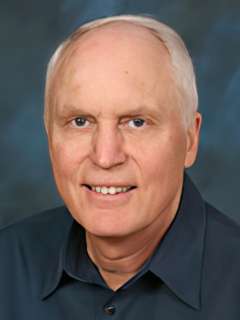
Oliver Hankinson, PhD
Languages
Contact Information
Phone
Scientific Interests
Dr. Oliver Hankinson's research focuses on the mechanism of carcinogenesis by environmental chemicals. Specifically, Hankinson studies polycyclic aromatic hydrocarbons (found in cigarette smoke and smog), dioxin (a widespread pollutant) and related compounds. Carcinogenesis by these compounds depends upon their binding to the aryl hydrocarbon receptor (AHR) and the subsequent dimerization of AHR with the ARNT protein. He is studying the molecular mechanism of activation of gene transcription by the liganded AHR/ARNT dimer (including the role of coactivator proteins in this process). In addition, he studies the impact of dietary fats (particularly omega-3 and omega-6 polyunsaturated fatty acids {PUFA}) on chemical carcinogenesis.
Current research projects include utilizing the CRISPR-Cas9 gene editing system to identify novel gene products required for transcriptional activation by the AHR/ARNT dimer and investigating the effects of dietary PUFA on cancer progression elicited by chemical carcinogens.
Highlighted Publications
Solaimani P, Wang F, Hankinson O. SIN3A, generally regarded as a transcriptional repressor, is required for induction of gene transcription by the aryl hydrocarbon receptor. J Biol Chem. 2014 Nov 28;289(48):33655-62. doi: 10.1074/jbc.M114.611236. Epub 2014 Oct 10.
Yang J, Solaimani P, Dong H, Hammock B, Hankinson O. Treatment of mice with 2,3,7,8-Tetrachlorodibenzo-p-dioxin markedly increases the levels of a number of cytochrome P450 metabolites of omega-3 polyunsaturated fatty acids in the liver and lung. J Toxicol Sci. 2013;38(6):833-6.
Solaimani P, Damoiseaux R, Hankinson O. Genome-wide RNAi high-throughput screen identifies proteins necessary for the AHR-dependent induction of CYP1A1 by 2,3,7,8-tetrachlorodibenzo-p-dioxin. Toxicol Sci. 2013 Nov;136(1):107-19. doi: 10.1093/toxsci/kft191. Epub 2013 Aug 31.
Ingelman-Sundberg M, Zhong XB, Hankinson O, Beedanagari S, Yu AM, Peng L, Osawa Y. Potential role of epigenetic mechanisms in the regulation of drug metabolism and transport. Drug Metab Dispos. 2013 Oct;41(10):1725-31. doi: 10.1124/dmd.113.053157. Epub 2013 Aug 5.
Bui P, Solaimani P, Wu X, Hankinson O. 2,3,7,8-Tetrachlorodibenzo-p-dioxin treatment alters eicosanoid levels in several organs of the mouse in an aryl hydrocarbon receptor-dependent fashion. Toxicol Appl Pharmacol. 2012 Mar 1;259(2):143-51. doi: 10.1016/j.taap.2011.12.009. Epub 2011 Dec 20.